While most people may remember The Smurfs from the Saturday morning cartoon series in the 1980s and the movies in the 2000s, the series has continued in various forms, such as the long-running comics in Belgium and the recent series on Netflix and Nickelodeon. The party game and kart racer based on the IP aren't that great, but the adventure games are something else. No one would've expected The Smurfs: Mission Vileaf to take its inspiration from Super Mario Sunshine, and fewer still would have expected The Smurfs 2: The Prisoner of the Green Stone to be heavily inspired by Ratchet & Clank: All 4 One. Even more surprising is the fact that both of those games are quite good. The Smurfs: Dreams aims to continue that streak of surprisingly good adventure games, and it does — even with a completely different developer at the helm.
The story follows the blueprint of most Smurfs adventures to date. The wizard Gargamel is still on a quest to find the Smurfs and use them as an ingredient to create a stone that will turn any material into gold. This time around, he creates a sleeping potion and sprinkles it on the nearby sarsaparilla bushes. With the Smurfs knocked out, he can use his dream-finder to locate the village and capture the little blue creatures. Unfortunately, not all of the Smurfs have succumbed to this, including Papa Smurf, who concocts a potion to enchant a pillow that'll send someone into the dream world to wake up the Smurfs who have been knocked out by the potion. You happen to be the lucky Smurf chosen for the job.
There are two things that make this game feel different from other games in the series. The first is that you're playing as a nameless, non-descript Smurf. Most of the recent games have had you playing as actual named characters, so it's interesting to see this practically blank slate. The second thing that makes this interesting is the general lack of voice work for most situations. The cut scenes are all pantomimed, and there's no dialogue throughout the gameplay sections. The only time you'll hear any voices is when a Smurf happens to say "hi" to another Smurf. On the one hand, it feels strange to have a Smurfs game where the Smurf jokes are almost absent, except for the boot screen saying that this game is better played with a controller. On the other hand, if you happen to be playing the game despite disliking The Smurfs, you'll appreciate that joke not being run constantly throughout the game.
This time around, the gameplay takes its inspiration from Super Mario 3D Land, as the game is presented from an isometric perspective with a fixed camera. The basics are covered from running to jumping over chasms and on enemies. There are a ton of collectibles to gather, including keys to unlock your way through a level. The hazards you encounter are things you've seen before, like rotating platforms and ones that disappear after a while. There are moments when those kinds of hazards are combined. You've got a standard double-jump with a bit of a float at the end, but you can also encase yourself in a bubble before popping it to cover more distance when you jump. There's rarely a time when you'll need to use this kind of jump to cover a gap, but it's a nice thing to have in the arsenal.
Compared to the preview build from earlier this year, Dreams introduces some new tools to help along the way. There's a honey gun that lets you freeze enemies in place, and it can also lower some platforms or extend others, depending on whether you shoot into a fan or funnel, respectively. You'll find a lantern that can expose hidden platforms of light and make some light-based platforms disappear. There's also a hammer that can be used to build or smash glass pillars. Those items are temporary in that they only stay for given sections of a level, but they change up the gameplay by giving you more to do than just running and jumping.
The platforming is very well done thanks to the level design. Each stage comes with a bevy of things to do. There are plenty of hidden pathways to get collectibles, such as mushrooms that can later unlock bonus levels to rescue other Smurfs. Other secret pathways lead you to more berries to collect or even Azrael piñatas that can be broken for more berries. There are secret doors to get you into other smaller bonus areas. You might think it strange to have a button dedicated to waving and saying "hi" to other Smurfs in the area, but that yields bonus berries and uncovers Smurfs who want to play a hiding game; they disguise themselves as ordinary environmental objects. The levels may be littered with platformer obstacles and traps, but enemy encounters aren't so numerous. Everyone can be dispatched rather easily.
The level design shines once you reach the game's back half, where it gets really inventive. You'll run into freefall levels where the correct pathway isn't easily telegraphed. There's a later stage where you'll play around with reflections to find the correct path. There's a stealth level where light and sound affect how detectable you are, but the game grants some leeway for you to dive for cover before getting caught. Some levels deal with a specific mechanic, such as finding the odd monster out in a room, and others have you doing something out of the ordinary, like trying to score a soccer goal against a few enemies. Boss fights also show a good deal of variety, as each one is wildly different, but there are only about three major encounters in the game. This is where the title leverages the whole dream aspect to do something other than bog standard platforming, and the experience benefits greatly from it.
One of the things that Dreams gets right is the balance between being easy enough for kids and first-time game players while also being challenging enough for those more familiar with the platforming genre. The game has a healthy number of checkpoints, so even though the levels are quite lengthy, you won't have to replay large sections when you die. Any collectibles are saved upon death, so if you really wanted to, you can brute-force your way through some sections where you need to collect all of one item before moving on. That progression is also saved during the escort sections, but it means you need to hurry back to where you're escorting the firefly, as they'll eventually make their way back to the beginning if you don't return to that spot for a while. Those things play out well for the kids, but everyone else has to deal with the fact that you only get two hits before dying. Those aforementioned traps and boss fights can get quite tricky due to the combination of things that need to be done and the patterns that get intentionally tricky to read.
For the most part, there's not much to knock about the gameplay. Whenever you play a stage related to the lesser Smurfs, they sport generic themes of the starscape and dream sand instead of the distinct themes that Vanity and Smurfette have. They still play very well, but it would've been nice to see a different environment when trying to save someone like Farmer or Brainy, even though their journeys are short. The game design gets pretty inventive during the back half of the game. Again, this isn't really a bad thing, since the first half is done well, but it would've been nice to see the developers do something different early on in the game, too.
We encountered a bad bug while reviewing the game. When going from one doorway to another, your Smurf either wouldn't not show up after the door opens and closes, or you never get control of your Smurf again. This happened roughly three times throughout the review period, and while a restart of the level does fix things, it becomes an annoyance when it occurs in the middle of a stage; restarting means having to go back to the beginning of the level instead of a checkpoint.
From beginning to end, the campaign lasts around six hours, although that's dependent on your skill level. The game does feature things to do after the credits roll. In addition to the short levels that are unlocked throughout the journey, more appear after the final level, which also means revisiting some older levels to get the necessary mushrooms to unlock them. Saving Tailor Smurf also means that you can use your berries to unlock most of the game's costumes; this also necessitates a repeat visit to older levels to get what you need. The same goes for thread spools that you can use to unlock some of the costumes the game offers up. Then you have Smurf Village, which has plenty of little secrets to uncover — but only after you've rescued everyone in the game.
The sound for the game is quite well done. Even though the voice work is minimal, none of it sounds terrible or out of place, while the effects are in the same spot. However, it is the music that really impresses, as it goes for a more epic tone than expected. It sounds amazing and fits perfectly with each level and situation; it stands way above what's expected from other licensed games.
Graphically, Dreams looks great. The more generic levels look good partially because of the detail on all of the sandy structures, and the themed levels also look gorgeous due to the similarly high level of detail on everything. The environments also look alive thanks to the plethora of Smurfs that seem to populate every inch of the screen, all with their own unique animations. The same can be said for the enemies with their smooth animations, even if there isn't a large variety of them to fight. The lighting effects make the game look great, and the visuals don't suffer from texture or model pop-up, making it look more advanced than other smaller licensed games.
Steam Deck users will find that the game works very well on the portable device. Just like with ultrawide support, the settings may tell you that the game runs at the native 1280x800 resolution, but actual gameplay shows off a 1280x720 resolution instead. The game defaults all of the graphical settings to Epic, and while that might seem like too much for the handheld, the game still runs at 60fps through most situations while still looking quite good. Surprisingly, these settings produce a runtime of a little less than three hours on the LCD version of the device on a full charge. You can probably tweak a few things to get that reading over three hours, but without changing a thing, the game feels well optimized for the device.
Like its predecessors, The Smurfs: Dreams is a pleasant surprise. The gameplay takes the more recent platforming template and ensures it feels solid while also adding in a few twists to spice things up. There's a nice balance between being easy and having some challenge. The presentation complements this by being pleasing all around. Provided that the big traversal bug gets fixed, you're looking at a game that is well worth checking out — even for platforming fans that aren't even fans of The Smurfs.
Score: 7.5/10
More articles about The Smurfs - Dreams







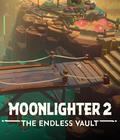
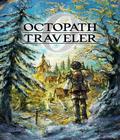
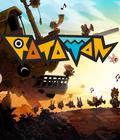
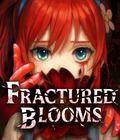

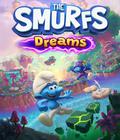 Prepare to embark on an epic 3D platformer adventure that will transport you beyond the Smurfs' wildest imaginations!
Prepare to embark on an epic 3D platformer adventure that will transport you beyond the Smurfs' wildest imaginations!








